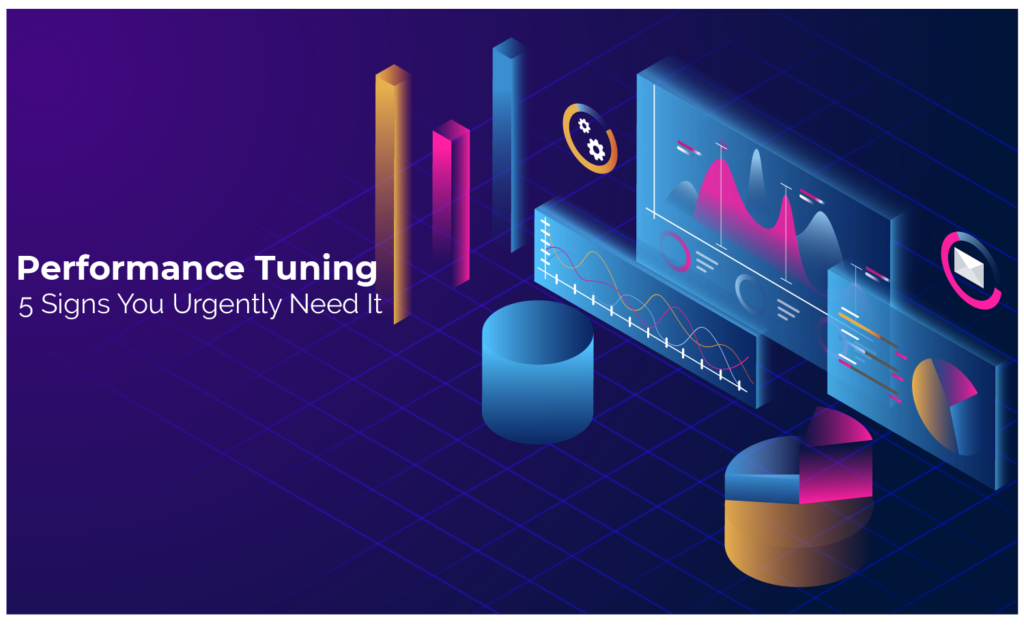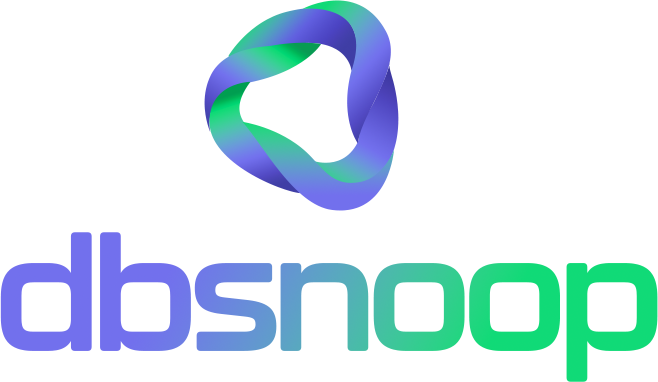

Performance degradation in distributed systems is rarely a sudden event. It is a gradual, almost imperceptible erosion, until it manifests as a chronic problem: high latency, intermittent timeouts, and the constant need to scale hardware resources. Often, these symptoms are incorrectly diagnosed as an infrastructure problem, leading to a vicious and expensive cycle of overprovisioning.
The true root cause, however, lies in the data layer, hidden in inefficient queries, inadequate index structures, or resource contention that traditional monitoring tools cannot correlate. Performance tuning is not just a “good practice,” but an essential engineering discipline for the health, scalability, and financial efficiency of a system. Ignoring its warning signs is not just accumulating technical debt; it’s compromising business speed and the user experience.
Below, we detail five unequivocal technical signs that your database environment needs an urgent performance tuning intervention.
Sign 1: Your Cloud Costs Are Increasing Without Apparent Justification
One of the most tangible indicators of database inefficiency is not on a technical dashboard, but on your cloud provider’s bill. If the computing and IOPS costs of your databases (AWS RDS, Azure SQL, etc.) are growing disproportionately to your business or data volume growth, this is a red flag.
The Vicious Cycle of Overprovisioning
This pattern is classic in teams that operate reactively. An application becomes slow. The initial analysis points to a 100% CPU spike or the exhaustion of disk I/O credits. The quickest and easiest solution is to scale the instance vertically: from a db.m5.large to a db.m5.xlarge, and so on. The problem is that this does not solve the cause, it only temporarily relieves the symptom.
A poorly written query that performs a full table scan on millions of rows will continue to be inefficient, consuming a massive amount of resources, regardless of the machine’s size. Overprovisioning becomes an expensive addiction, masking software inefficiencies with increasingly powerful hardware, inflating the cloud bill without delivering sustainable performance gains.
How Query Optimization Reduces the Bill
Performance tuning breaks this cycle. a single optimized query, for example, with the addition of a selective index, can reduce its CPU and I/O consumption by orders of magnitude. An operation that previously took 30 seconds and consumed 80% of the CPU can now execute in 100 milliseconds with negligible resource consumption. By applying this optimization to all critical queries, the direct result is a drastic reduction in the server’s average load. This allows for “rightsizing”: the practice of adjusting the cloud instance to the size it actually needs, rather than the size required to support the inefficiency.
Observability platforms like dbsnOOp are crucial in this process, as they not only identify the most expensive queries in terms of resource consumption but also analyze their execution plans and recommend the exact optimizations, such as creating an index, to reduce their computational cost and, consequently, the financial cost.
Sign 2: Application Latency and Timeouts Have Become Routine
When users start complaining about slowness, or when APM (Application Performance Management) dashboards light up with alerts of slow transactions and API timeouts, the database is almost always the prime suspect. The normalization of slowness is a clear sign that the technical debt in the data layer has reached a critical point.
The Impact on SLOs and User Experience
For SRE teams, latency is a fundamental metric directly linked to SLOs (Service Level Objectives). An SLO that defines that 99% of login requests must be completed in under 200ms is directly impacted by the performance of the query that validates the user’s credentials. When this query becomes slow due to the growth of the user table without proper indexing, the SLO is violated.
For the business, this translates into a poor user experience, frustration, cart abandonment in e-commerce, and, ultimately, customer churn. Latency is not just a technical problem; it’s a business problem.
Tracing Latency to the Root Cause
The difficulty lies in connecting a latency alert in the application to its origin in the database. An APM tool might indicate that a GET /api/orders/{id} API call is slow, but it can rarely show why. This is where observability differs from monitoring. A platform like dbsnOOp can trace this specific request, identify the exact SQL query it executed in the database at that moment, capture its execution plan, and diagnose the inefficiency.
The analysis shifts from “the database is slow” to “this specific query is performing a table scan on the orders table, when it should be using an index seek on the primary key.” This precision transforms troubleshooting, allowing developers to solve the problem at its source.
Sign 3: Your Team Lives in “Firefighter Mode” with a High MTTR
If your engineering team’s routine involves “war rooms” to diagnose performance incidents, where SRE, DevOps, DBA, and Development teams debate for hours about the possible cause of the slowness, you have a process and tool problem. This reactive mode, known as “firefighting,” is expensive, stressful, and inefficient.

From the War Room to Targeted Analysis
The classic war room scenario is the consequence of the lack of a single source of truth. The infrastructure team presents CPU and network graphs. The application team shows error logs and APM traces. The DBA runs manual scripts to check active sessions and locks. Each team has a partial and disconnected view, which leads to a cycle of accusations and a long mean time to resolution (MTTR). Performance tuning, when supported by an observability platform, eliminates this friction.
Reducing MTTR with Precise Diagnostics
dbsnOOp, for example, centralizes and correlates all these views into a single interface. When a performance incident occurs, any team member can access the platform and see, on a unified timeline, the CPU spike, the exact query that caused it, its execution plan, the associated wait events (such as waits for disk or for locks), and the session that executed it. The opinion-based debate is replaced by a fact-based analysis. The diagnosis that used to take hours of manual investigation now takes minutes, drastically reducing the MTTR and freeing the team to focus on the solution, not the investigation.
Sign 4: Development Velocity is Dropping
This is one of the most subtle, yet most damaging, signs. If your development teams are delivering fewer features or taking longer to complete sprints, the cause may not be the complexity of the new tasks, but rather the time spent fixing legacy performance problems.
The Hidden Cost of Performance Technical Debt
Unresolved performance problems are a form of technical debt that charges high interest. Developers are constantly interrupted to investigate why an old feature has become slow in production. The time that should be allocated to innovation is consumed by reactive optimizations and investigations of problems that could have been avoided. This generates frustration, lowers team morale, and directly impacts the company’s ability to compete and innovate.
“Shift-Left”: Integrating Performance into the CI/CD Pipeline
The solution is to adopt a “shift-left” approach, bringing performance analysis to the beginning of the development cycle. Performance tuning should not be an activity performed only in production. With tools like dbsnOOp, it is possible to integrate performance “quality gates” into the CI/CD pipeline. Before new code is merged, its queries can be executed in a staging environment and analyzed automatically.
The platform can compare the performance of the new queries with the baseline of the production version and fail the build if a significant regression is detected. This creates a culture where developers are responsible for the performance of their code from the start, preventing technical debt from reaching production.
Sign 5: Scaling Up Hardware No Longer Solves the Problem
Perhaps the most definitive sign that performance tuning is unavoidable is when the strategy of vertically scaling to larger, more expensive machines stops being effective or offers diminishing returns.
Reaching the Limit of Vertical Scalability
There is a physical and financial limit to how large a database instance can be. There comes a point where even the most powerful machine available from your cloud provider can no longer compensate for the inefficiency of a poorly optimized workload. Furthermore, certain problems, such as severe lock contention or deadlocks, are not solved with more CPU or RAM. Increasing hardware in these cases is like trying to solve a traffic jam by buying faster cars; it doesn’t solve the fundamental bottleneck.
The Focus on Efficiency for True Scalability
The true path to scalability is not scale-up (vertical), but the efficiency that allows for scale-out (horizontal). A system with optimized queries and an efficient workload can be distributed across multiple smaller, cheaper instances. Performance tuning is the engineering work that ensures each unit of computation is used as effectively as possible.
By optimizing the queries and data structure, you reduce the load on each node, allowing the system as a whole to scale linearly and sustainably. dbsnOOp is fundamental here, as it provides the necessary insights to find and eliminate these inefficiencies, paving the way for a truly scalable architecture.
From Reactive to Proactive: The Culture of Performance Tuning
These five signs are symptoms of a reactive approach to performance management. Waiting for problems to happen and then fixing them is an unsustainable strategy in the digital economy. The transition to a proactive culture of performance tuning, enabled by continuous observability, is what differentiates high-performance engineering teams. It is about treating performance not as a luxury, but as a functional requirement, essential for the stability, cost-effectiveness, and success of the business.
Want to solve these challenges intelligently? Schedule a meeting with our specialist or watch a live demo!
To schedule a conversation with one of our specialists, visit our website. If you prefer to see the tool in action, watch a free demo. Stay up to date with our tips and news by following our YouTube channel and our LinkedIn page.
Schedule a demo here.
Learn more about dbsnOOp!
Learn about database monitoring with advanced tools here.
Visit our YouTube channel to learn about the platform and watch tutorials.

Recommended Reading
- Performance Tuning: how to increase speed without spending more on hardware: Before provisioning more expensive cloud instances, it’s crucial to exhaust optimizations at the software level. This article covers performance tuning techniques that allow you to extract the maximum performance from your current environment, focusing on query and index optimization to solve the root cause of slowness, rather than just remedying the symptoms with more hardware resources.
- The Health Check that reveals hidden bottlenecks in your environment in 1 day: Understand the value of a quick and deep diagnosis in your data environment. This post details how a concentrated analysis, or Health Check, can identify chronic performance problems, suboptimal configurations, and security risks that go unnoticed by daily monitoring, providing a clear action plan for optimization.
- How dbsnOOp ensures your business never stops: This article explores the concept of business continuity from the perspective of proactive observability. Learn how predictive anomaly detection and root cause analysis allow engineering teams to prevent performance incidents before they impact the operation, ensuring the high availability of critical systems.

